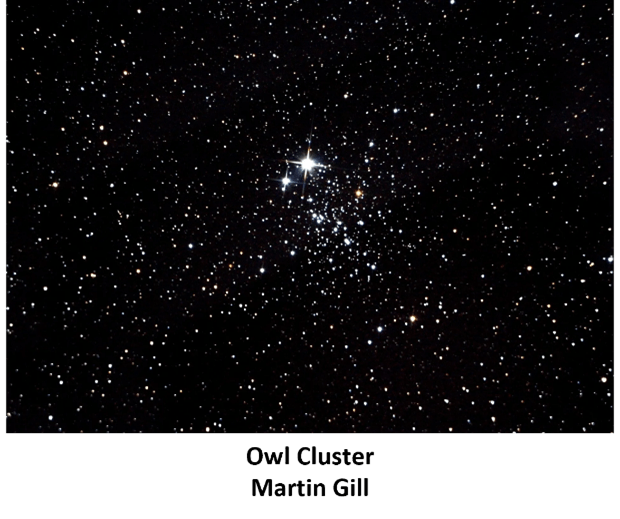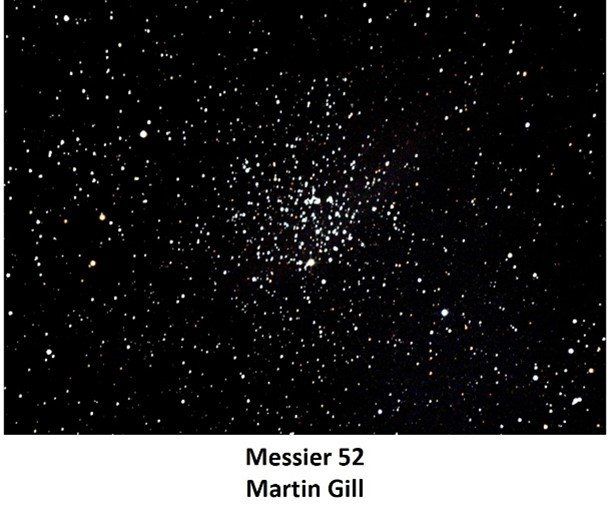Constellation for November 2022 – Cassiopeia

Cassiopeia is a circumpolar constellation, it can be seen all the year round, but it is easiest to observe in the autumn. In Greek mythology, Cassiopeia was a vain queen of Ethiopia, the wife of King Cepheus and the mother of Andromeda. She is pictured as sitting on a chair. The distinctive W-shape of Cassiopeia is easy to spot in the sky and it lies between Cepheus and Andromeda. It is also opposite the Plough with Ursa Minor between them. The five stars of the W are Segin (Epsilon Cassiopeiae, magnitude 3.3), Ruchbah (Delta Cassiopeiae, mag. 2.7), Gamma Cassiopeiae (mag. varies between 2.2 and 3.4), Schedar (Alpha Cassiopeiae, mag. 2.2) and Caph (Beta Cassiopeiae, mag. 3.3). Remarkably, they are all close to magnitude 3 except Schedar and they are all variable stars except Segin, Gamma Cassiopeiae being the most notable.
Between Gamma Cassiopeiae and Schedar lies Achird (Eta Cassiopeiae, mag. 3.5). It is a double star and its companion is magnitude 7.4. They are fairly widely separated (13.4 arcseconds) and are often seen as being yellow and purple, hence its nickname the “Easter egg double”. Another double is Sigma Cassiopeiae [1], which forms a triangle with Schedar and Caph. The two stars are magnitude 5.0 and 7.2, but separated by only 3.1 arcseconds; their colours are yellow and blue.


There are many star clusters in Cassiopeia. The easiest to find is Messier 103 [2], which is just above Ruchbah. It is 10,000 light years away and is about 25 million years old. Messier 103 is fairly small, basically three stars in a line in a small telescope, and rather disappointing for a Messier cluster; it was the last object added by Messier to his famous list. Messier 52 [3] is more pleasing to observe. It is 5,000 light years distant and 35 million years old. Messier 52 can be found by starting at Caph and then going on as far as the distance between Schedar and Caph.
However, the most striking cluster in Cassiopeia is the Owl Cluster [4], also known as the ET Cluster after the extra-terrestrial in Steven Spielberg’s film. It gets its nicknames from a pair of fairly bright stars at the top of the cluster which are the “eyes” and the rest of the cluster forms the “body”. The brighter of the pair is Phi Cassiopeiae, a yellow star of magnitude 5.0; it is probably a foreground star and not part of the cluster. The Owl Cluster (NGC 457 or Caldwell 13) is about 8,000 light years away and around 21 million years old. It lies between Ruchbah and Achird. Finally, the beautiful circular cluster NGC 7789 [5] lies between Sigma Cassiopeiae and Rho Cassiopeiae (its magnitude varies between 4.1 and 6.2) above it. It was discovered by Caroline Herschel in 1783 and is known as Caroline’s Rose because of its “petals”. It is about 8,000 light years distant like the Owl Cluster, and is a very old cluster, with an estimated age of 1,600 million years.


